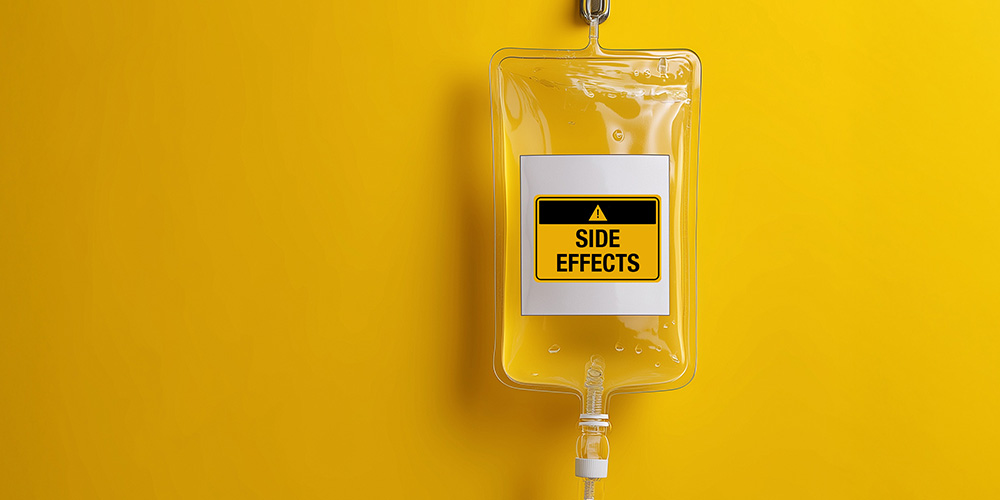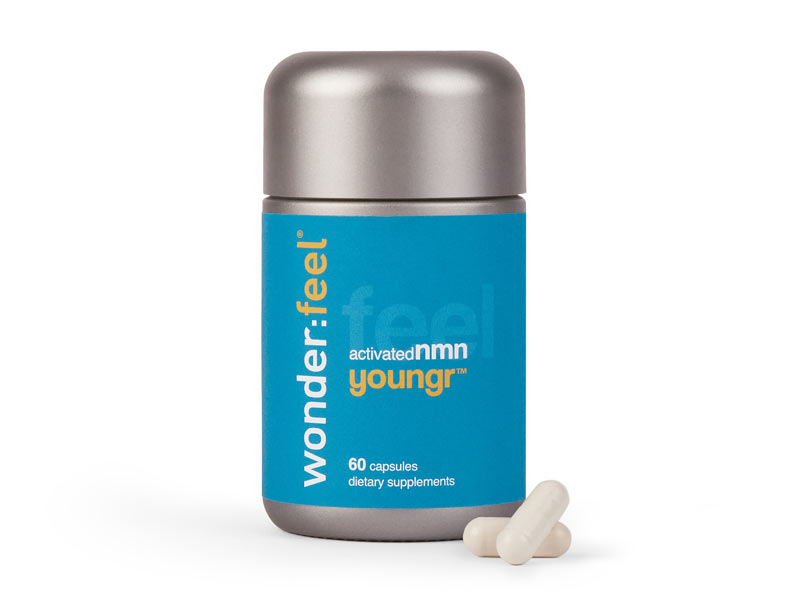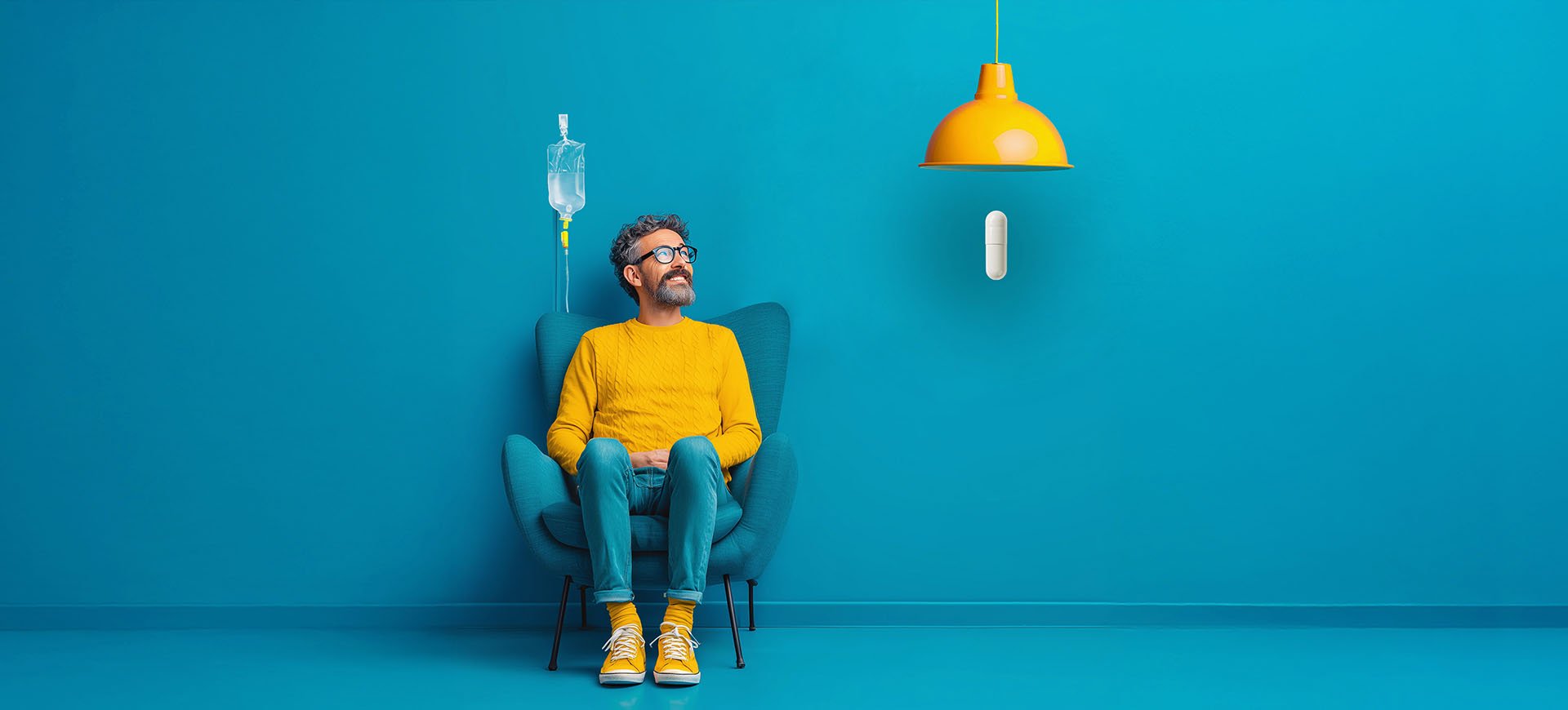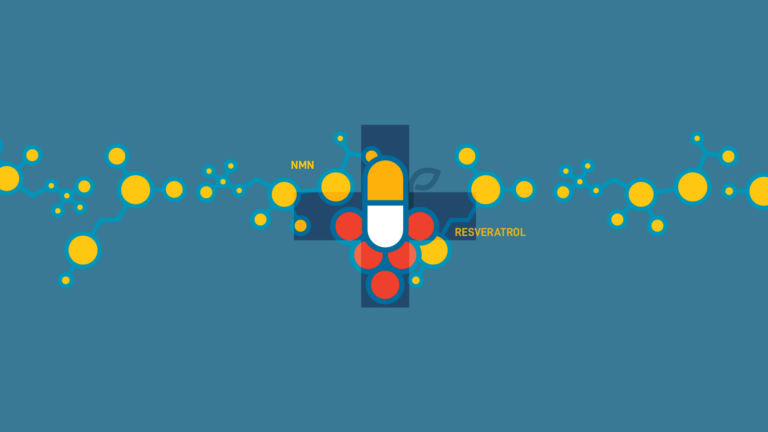Key Takeaways
- IV therapy is trendy, but evidence about its benefits for NAD is, well, unclear. While NAD is essential in the body, it’s hard to supplement directly—no matter the method of delivery.
- Most cells prefer NAD precursors, like NMN and NR, and research to date finds oral supplementation is the way to go. (Bonus: no needles required!)
- For most people, oral NAD precursors are the smarter, easier, more effective and certainly more science-backed way to boost NAD for healthier aging.
As a whole, IV therapy is on the rise. Between the celebrities and influencers, our instant gratification culture, and the health and wellness boom, it makes sense. IV treatments are marketed as a fast, efficient way to boost immunity or energy, recover from physical exertion or a hangover, and flood the body with nutrients for better skin and hair. But does it actually work? While IV therapy might be beneficial in very specific contexts, whether it’s worth it for the average person is definitely more of a gray area. And nowhere is that more evident than with NAD IV therapy. It’s widely marketed by medical spas, wellness centers and infusion clinics as the new-age fountain of youth, but does the science actually support the claim that intravenous NAD delivery is best—or is there a better way to supplement?
What is NAD IV therapy, and how does it work?
Let’s detour into a quick discussion on NAD before we get into IV therapy. Formally known as nicotinamide adenine dinucleotide, NAD is a coenzyme you’ll find in every single living cell. It has three main functions: energy production, DNA repair and antioxidant function. It’s so important that it’s widely considered the fuel for life itself. Sounds a little fanciful, but it’s no exaggeration.
Let’s start with the whole energy thing. Everything you do—talk, eat, breathe, think, move—requires energy. And while NAD doesn’t supply energy itself, it facilitates the production of ATP, or adenosine triphosphate, which is essentially the battery pack that gives us the fuel for absolutely everything our bodies do. Moving your eyes to read these words? Healing a nick from your shave this morning? Moving blood through your veins? All of it uses ATP, our body’s actual usable energy. And ATP production needs NAD. When you’re running low on NAD, you’re running low on ATP, and that scenario makes us feel weak, tired and foggy.
Next up is DNA repair. Sound important? It is! It may not be on your daily radar, but your DNA is under pretty much relentless attack from things like the sun, pollution, stress, and just the fact that you’re getting older every darn day. That onslaught causes damage to your very DNA, and busy little worker bees—DNA repair enzymes, like PARP—are tasked with repairing that damage on the spot. Just like ATP, PARP needs NAD to do its job. When there isn’t enough NAD, PARP repair work gets sloppy, creating serious health problems down the line.
Nicotinamide Adenine Dinucleotide (NAD) and DNA Repair

Last but certainly not least is antioxidant defense. The very act of living in an oxygen-rich environment means our bodies produce something called free radicals. Unfortunately, these molecules are like that one uncle at Thanksgiving dinner—unstable and prone to doing damage. When we have too many free radicals roaming around our bodies, we end up with oxidative stress. In the long term, oxidative stress is linked to major health issues in the brain and heart, not to mention premature aging, a compromised immune system, metabolism issues and the list goes on. Antioxidants safeguard against oxidative damage, so we need them. Desperately. They help neutralize free radicals, protecting our cells. We can source some antioxidants from food, but we also make our own—and that’s where NAD comes in. We use NADPH to whip up antioxidants, and, as you’ve probably guessed, NADPH requires NAD.
Now, there’s one other thing to understand about NAD—and it’s a doozy. We need NAD for all of these essential jobs in our body, but we naturally produce less of it as we get older. At the same time, our bodies are dealing with more—more inflammation, more oxidative stress, more DNA damage—which means we’re burning through NAD faster than ever.
Now, along comes a med spa or mobile infusion service offering IV NAD therapy that promises a simple, effective way to replenish NAD by delivering it directly to your veins. That’s essentially how NAD IV therapy works. It’s pretty cut and dried. And increasing NAD, so they say, translates to all kinds of amazing benefits, like improved focus and memory, more energy, even physical benefits like fewer wrinkles and greys. Sounds great, right? Well, yes and no.
Don’t get us wrong—boosting NAD does indeed offset the decline of aging, leading to those happy benefits mentioned above. The problem is that NAD IV therapy, AKA “dripping,” probably isn’t going to do the job in the way you might expect.
The thing about NAD
As a molecule, NAD doesn’t really lend itself to supplementation. Considering the many, many things it does, it’s probably no surprise that NAD is a big, complex molecule. And its size is one of the reasons it doesn’t absorb particularly well when it’s taken orally. To make matters worse, NAD is broken down by various digestive enzymes and the acidic environment in the digestive system, so very little NAD actually makes it to the cell. That’s why proponents of NAD IV therapy are quick to point out that going the intravenous route is so effective. And while a drip does indeed bypass the whole digestion step by delivering NAD directly to your bloodstream, that doesn’t mean it gets where it needs to go—which is inside the cell.

Another consideration: NAD molecules have a polar structure (both positive and negative charges), which means they have hydrophilic characteristics. In other words, they like mixing with water. But our cellular membranes are picky and mostly let in molecules that don’t mix with water, which amounts to another hurdle for NAD trying to cross into the cell. There is some debate about whether NAD might have special cellular transporters in very specific cells (like immune cells), but this is fairly controversial and lacks consensus.
There are other rumblings about what specifically happens to NAD in the body. The working theory describes an incredibly complex process, not to mention a few different interpretations, but here’s the simplest explanation: In plasma, NAD is rapidly degraded into substances known as NAM, or nicotinamide, and ADR, or adenosine diphosphoribose. The NAM then enters the cells, where it’s converted to NMN (nicotinamide mononucleotide) by a special enzyme, and then back to NAD. The thing is, this is largely speculative, and again, the starting NAD molecule doesn’t absorb well in the gut, so much of it is broken down before it can get anywhere near your tissues and cells. The better alternative is to supplement with NAD precursors, which we get into below.
What the research says about NAD IV therapy
Let’s just clarify upfront that there are no large-scale clinical trials that specifically investigate the efficacy and safety of NAD IV therapy. The smaller studies we do have offer mixed feedback, and those with positive results are based on small sample sizes and very often conducted by NAD IV drip clinics (hmm…). But let us take a closer look:
- A 2019 study found that much of the NAD delivered intravenously during a six-hour session ended up in the urine.
- A 2020 review of clinical evidence for targeting NAD therapeutically summed up its take thusly: “the metabolism of intravenously infused NAD/NADH is currently unclear.”
- A 2021 study with 15 healthy males between the ages of 30 and 55 undergoing five consecutive days of IV NAD infusion displayed improved cognitive performance compared to the placebo group.
- A 2024 study with 53 healthy adults comparing NAD IV to NR IV found that the latter seriously outperformed the former, with fewer and less severe adverse experiences during infusion, faster session time, and higher NAD concentrations. Worth noting, however, is that this study was funded by an NR IV company!
At this point, we simply don’t have enough clinical evidence to say with any certainty that NAD IV therapy effectively raises NAD levels in the body. And that, of course, is the goal. On the other hand, there is quite a bit of anecdotal evidence from people who report feeling energized and more focused after an NAD IV drip.
While we look forward to more research into NAD IV therapy, here’s what we do know: those NAD precursors we referenced above, including NMN and NR, don’t face the same limitations as NAD itself. NMN and NR, or nicotinamide riboside, are both small, agile molecules. They’re easily absorbed in the body and hold up quite well in the digestive system. But the most important part happens when these molecules are delivered to the cells. Unlike NAD, which can’t effectively cross the cellular membrane, these molecules can and do. And once they’re inside the cell, both NMN and NR convert to NAD, which is exactly what we want.
What’s more, there is a growing mountain of evidence pointing not only to the efficacy but safety of NMN and NR supplementation. And the most-studied method of delivery? Oral capsules. Not quite as sexy as a med spa visit perhaps, but undeniably convenient and cost-effective, with no needles required.

This kind of daily supplementation is more sustainable than a drip that pumps high amounts of NAD into your system in one (long) go. NMN in particular works by fueling the body’s natural NAD production pathways, which makes for a more controlled and physiologically aligned approach. Clinical research suggests that a daily dose of 900-1,200 mg of NMN can effectively elevate NAD levels, and it does so without the drawbacks associated with high-dose IV infusions.
NAD IV therapy side effects & safety considerations
Even if you aren’t squeamish about needles, the logistics of NAD IV therapy can be a little off-putting. It needs to be pushed slowly to limit potential side effects, which means you’re stuck with a needle in your arm for a good two to four hours (or longer!). Too much NAD too quickly is associated with all kinds of unpleasantness, including chest tightness, muscle cramping, nausea and feeling wired—and not in a good way. Here’s how noted biohacker Dave Asprey describes his experience with NAD IV therapy: “I finally got to where I could do a gram in about 45 minutes, but it’s like something sitting on your chest, and you’re turning red.” You might feel dizzy or lightheaded, and some people get anxious. There’s also a potential for an immune or inflammatory response after NAD IV therapy, which suggests the body treats it like any type of foreign invader or stress response. All in all, it’s not the most agreeable way to spend the afternoon.
From a safety standpoint, it’s extremely important that you’re working with a professional who can guarantee sterile equipment and correct IV placement. Otherwise, you’re putting yourself at risk of infection or complications.
And again, there’s not a good body of research that tells us how well NAD IV therapy works, what happens with repeated, high-dose infusions over time, and how frequently you should be doing this kind of thing.

NAD IV therapy vs. oral supplements—What’s better?
At this point, you can probably guess. In an apples-to-apples comparison, oral supplements of NMN and NR are the better choice by every measure if the goal is sustained replenishment of NAD in the body. But let’s break it down.
- Clinical evidence. Research to date has found that oral supplementation with NMN and NR is not only safe and easily tolerated, it effectively increases NAD levels sustainably over time. At this point, we just can’t say the same about NAD IV therapy. And really, what more do you need to know?
- Convenience factor. An NMN supplement like Wonderfeel Youngr™ couldn’t be easier—two capsules, every day. No needles, no appointments, no lengthy infusion sessions during which you’re tethered to a drip. And no unpleasant side effects!
- Price point. Be prepared to pay a pretty penny if you go the IV route. Low doses are typically several hundred dollars per session, while high doses are anywhere between $400 and $700 or more, depending on where you live. You may be able to skim some pennies off your per-session price by buying a package, but then your cash outlay is several thousand dollars. A subscription to Wonderfeel Youngr™, on the other hand, is $73 for a month’s supply.
The bottom line
The discovery that we can effectively boost NAD in the body is one of the most exciting breakthroughs in longevity science. But supplementing directly with NAD isn’t the way to do it—intravenous delivery or otherwise. While IV therapy can be really beneficial in the right circumstances, like instances of dehydration and some nutrient deficiencies, NAD delivery doesn’t appear to be one of them. Until we have scientific evidence that says otherwise, you’re much better off skipping the drip and going the oral supplement route with an NAD precursor. Allow us to make a suggestion with Wonderfeel Youngr™.
Frequently Asked Questions
Are NAD IV drips worth it?
For most people, probably not. NAD IV drips are often marketed as miracle infusions, but right now, the science just isn’t there. NAD is a large, charged molecule that can’t cross the cellular membrane, even when it’s delivered straight to your bloodstream. Current research is limited and mixed (though that might change in time), and IV sessions themselves are lengthy and expensive. Plus, side effects like chest tightness and nausea aren’t uncommon. For now, oral NAD precursors like NMN are better studied, better absorbed, far more convenient, and much more affordable.
What is NAD IV therapy for?
It’s marketed for multiple benefits, higher energy, improved mental clarity and focus, enhanced physical performance, and better immune function, all of which come from increasing NAD levels in the body. This essential molecule supports energy production, DNA repair and antioxidant defense. But according to the latest research, oral supplements like NMN are actually more effective at boosting NAD than an NAD IV drip.
Does NAD infusion really work?
Not reliably, according to the latest science. NAD IV therapy is intended to quickly replenish NAD levels, which drop as we age. But NAD is hard to get into the cell, even when it’s delivered via IV, and no high-quality clinical trials find NAD IV therapy to be effective or superior (though future studies could show better results). Right now, the more effective route is oral supplementation with NAD precursors, like NMN.
Are NAD supplements as effective as IV?
They’re actually more effective. NAD supplements, specifically NAD precursors like NMN and NR, are the building blocks for NAD in the body. They’re smaller, more agile and far more capable of crossing the cellular membrane into the cell than NAD. IV therapy has its own drawbacks, like the cost and inconvenience, and there is currently limited clinical research into the efficacy of NAD IV therapy (though future studies could show better results). But a growing body of human studies shows that oral NMN capsules are really effective, not to mention much cheaper and far more convenient!. The consistent, steady increase from a daily supplement mimics how our bodies produce NAD, especially when we’re younger.















